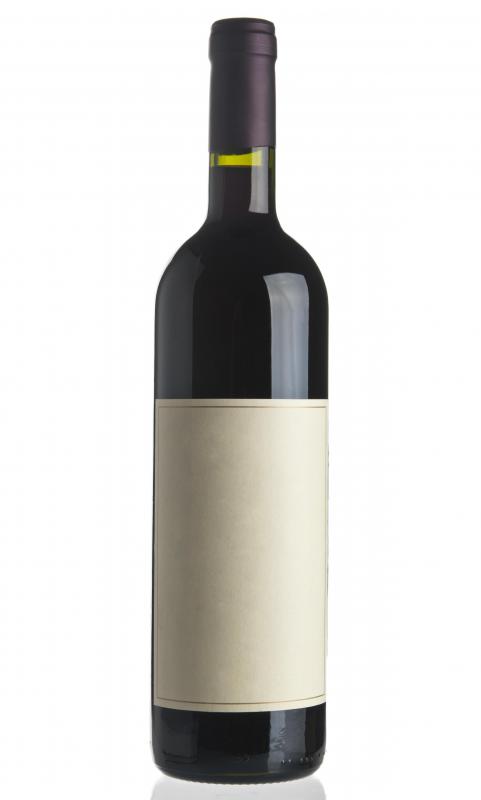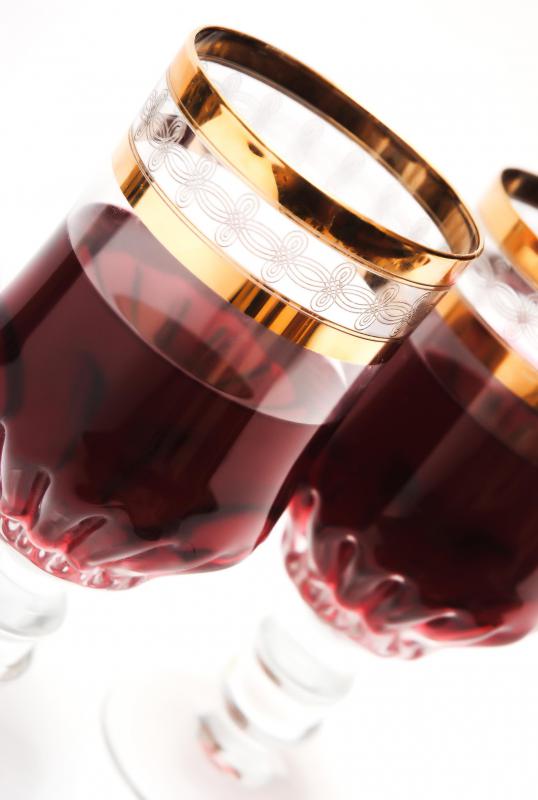At WiseGEEK, we're committed to delivering accurate, trustworthy information. Our expert-authored content is rigorously fact-checked and sourced from credible authorities. Discover how we uphold the highest standards in providing you with reliable knowledge.
What is Port?
Port is a strong, usually red, fortified wine. It originates in northern Portugal, from the city of Porto in the Douro region. While true port is always from Portugal, in recent years, the name has come to be used as a generic term for this style of fortified wine. As a result, many Portuguese producers have begun to differentiate their product by labeling it Porto.
The beverage is made by adding a grape brandy to the wine as it is fermenting. This stops the wine from fermenting any further, leaving it substantially more alcoholic — and therefore with a higher sugar content, since less of the sugar is able to finish converting into alcohol. This practice has been around for hundreds of years, since brandy was historically added to wines from northern Portugal to help them remain preserved during their trip to England.

Nearly all port is red, but there is a special variety of white port that has little popularity outside of Portugal. This type is made by using very pale grapes. Some cheaper tawny ports fake the subtlety of age by adding white port to a younger tawny.
Wood ports are the most common type. A ruby port is young, having aged in the cask but not in the bottle. They are full of energy and don’t have much subtlety to them. A tawny port has been aged in the cask for an extended period of time — 10 to 40 years, usually — and so has taken on a lighter, “tawny” color.

A vintage port is aged for two years in the cask, and then left for a long period of time to age in the bottle. Vintage varieties are not made every year — about one in three years is deemed good enough for vintage — but are far superior to wood ports. Vintage often has sediment in the bottom from aging, and so should be decanted before drinking. A good bottle should not be ready to be drunk for at least 10 to 20 years, and can continue to age for far longer than that. Because of how long it takes to age, many parents buy a good bottle when a child is born, to be bestowed upon the child on his or her 18th or 21st birthday — or whatever the legal age of drinking may be in their country.

Late bottled vintage port, or LBV, is a lesser variety of vintage port. These wines are bottled between four and six years after production, and can be drunk upon release, requiring no extended aging like the vintage varieties. They range from rather low quality to those that come close to meeting the quality of the true vintage varieties. A vintage character port is a special type of LBV that blends vintages together from the best years.
Port is a perennial favorite drink throughout the world, particularly in England and France. Some people enjoy it as an aperitif, and others prefer it as a dessert wine, but all those who enjoy it hold it in a special place in their hearts.
AS FEATURED ON:
AS FEATURED ON:
















Discuss this Article
Post your comments